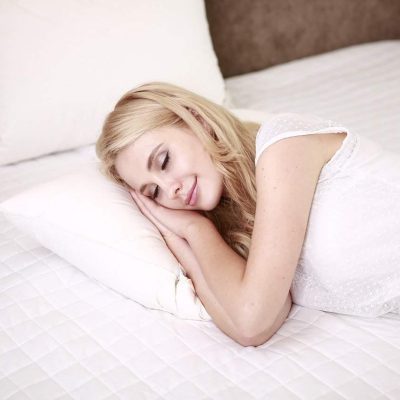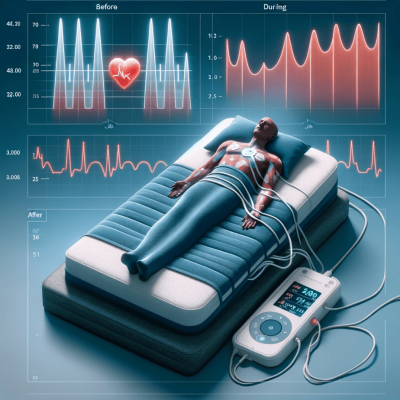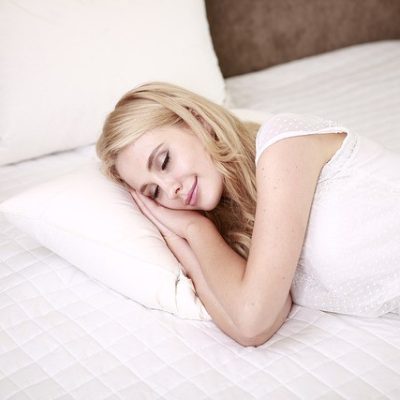If you’re a CPAP user, you know it can be challenging to keep up a regular cleaning schedule for your CPAP device and accessories. Un-cleaned CPAP devices and accessories can be contaminated with harmful germs. This, in turn can make you sick. So, an automated CPAP cleaning device might look like a good option for most people.
But, before deciding to buy a CPAP cleaner, you must need to know the pros and cons of each type of CPAP cleaner. This article is compiled to give you a detailed outlook of each kind of CPAP cleaner along with its positive and negative sides. Read on to find out more.
Table of Contents
ToggleWhy Does CPAP Machine Need Cleaning?
CPAP machine consists of a filter, humidifier, and mask. These parts typically collect dust particles, pollutants, bacteria, viruses, and even develop mold (fungus). Any germ or pollutant that you contact with during the daytime can also come into contact with your mask when applying it at night (1).
Furthermore, the humidifier develops moisture in your machine tubing and mask. This in turn enhances the development of fungi that mainly grow in moist places (2). It’s also important to note that you should clean and air-dry your equipment thoroughly on a regular basis to avoid the accumulation of moisture and thus the harmful germs.
When it comes to clean your CPAP machine and accessories thoroughly, you can do one of three things:
- Use an ozone-based CPAP Cleaner
- Use an ultraviolet light-based CPAP Cleaner
- Hand-wash it with mild soap and warm water and air dry the equipment
- Cleaning it by using diluted vinegar
1. What is Ozone CPAP Cleaner?
Ozone-based CPAP cleaners are water-free cleaners that use activated oxygen (O3) to kill germs. This type of cleaner has an ozone generator that split oxygen (O2) molecule and recreates it by combining another O molecule, thus developing an O3 (ozone or activated oxygen) molecule. The addition of the third O turns the molecule into an oxidant. Oxidant kills the germs with greater efficiency.
Pros/Cons of Using Ozone CPAP Cleaner
Pros
- Saves time
- Highly effective at killing germs
- Easy for use
Cons
- Not FDA approved at this time
- Generate odor
- Expensive than manual cleaning by hand
- Several safety issues as discussed below
Are Ozone CPAP Cleaners Safe For You?
Ozone is mostly marketed and advertised as “activated oxygen” but in actual “activated oxygen” is a toxic molecule. Below are the top concerns for people who prefer ozone-based CPAP cleaners.
- The maximum acceptable level of ozone is 05 part per million. For ozone to be used as an effective cleaner gas, it must be present in a concentration extreme higher than that which can be securely tolerated by humans and animals.
- Ozone can cause sufficient irritation to your lung. From 2017-2019, FDA has received 11 reports from patients facing breathing difficulty, asthma attacks, nasal irritation, cough, headaches, and other breathing complaints when ozone-based products were used to disinfect, clean, or sanitize CPAP machines and accessories (3).
- Ozone is a primary mucous membrane irritant (4) therefore can negatively affect your central nervous system. If you inhale too much ozone, you’re likely more at risk for heart and vision problems.
Are Ozone CPAP Cleaners Safe for Your CPAP Device?
CPAP equipment including masks is at higher risk of damage when sanitized with ozone-based cleaners. Below are the top concerns for your CPAP machine if you prefer ozone-based CPAP cleaners.
- Ozone gas can damage your CPAP equipment’s silicone seals and gaskets.
- Ozone gas molecules can also corrode the electronics of CPAP equipment.
Still, Interested In Ozone CPAP Cleaners? Must-Follow these Guidelines:
Cleaners are the most popular accessory for CPAP users despite all the above-listed concerns and risks. This is due to lack of time or physical limitations that make them use CPAP cleaners despite its risks. Anyone who chooses to use ozone CPAP cleaner should follow these guidelines to keep them on the safe side:
- You must follow the manufacturer’s instructions on how to safely use your ozone CPAP cleaner. When used accordingly these CPAP cleaners will not expose the user to an unacceptable level of ozone.
- After cleaning your machine, you should wait at least 2-3 hours to use it.
- You should not be in the room where you put the ozone cleaner for cleaning your CPAP equipment.
- Run your CPAP machine for 10 minutes before using it. It’ll allow fresh air to circulate through the entire CPAP system. This will reduce the ozone level and help flush the unit.
- It’s important to mention that if you smell the ozone it means you are breathing it.
2. What is Ultraviolet CPAP Cleaner?
UV light-based cleaners use ultraviolet light to kill germs. It consists of three different light bands including:
- Ultra violet- A
- Ultra violet- B
- Ultra violet- C
These light bands have the ability to break the bonds between the DNA of the germs thus killing them.
Pros/Cons of Using UV CPAP Cleaner
Pros
- Saves time, kills most of the germs in just 5 minutes
- Easy to use
- Considerably safe than ozone-based cleaners
- Generates no odor
Cons
- Not FDA approved at this time
- Less effective in killing germs than ozone-based cleaners
- Expensive than manual cleaning by hand
- Some safety issues as discussed below
Are Ultraviolet CPAP Cleaners Safe For You?
UV-based CPAP cleaners disinfect the CPAP equipment within the span of five minutes. UV light can be used to sanitize the different items ranging from hospital devices to airplane seats (2). FDA has certified UV light to clean N95 masks in healthcare settings (5). Moreover, FDA has not received any health problems associated with UV-based CPAP cleaners.
However, CPAP users should be aware that UV-based CPAP cleaner still lacks FDA certification due to below-listed concerns.
- Accidental exposure to UV light may cause injury depending on its wavelength, intensity, and exposure time.
- According to FDA preliminary lab testing, some UV CPAP cleaners may not be able to penetrate all parts of the CPAP device like mask, connector, and plastic tubing, which could lead to inadequate sanitization of your CPAP device (6).
- According to FDA, overexposure to UV light-based products could cause burns, eye damage, or increase the risk of skin cancer (7).
Are Ultraviolet CPAP Cleaners Safe for Your CPAP Equipment?
Ultraviolet radiation can cause significant damage to different materials. Below are the top concerns for your CPAP machine if you prefer UV radiation-based CPAP cleaners.
- Overuse of UV light can degrade different CPAP parts especially plastic tubing (8).
- UV light-based CPAP cleaners can shorten the life span of CPAP devices.
Still, Interested In An UV CPAP Cleaner? Must-Follow these Guidelines:
People mostly used CPAP Cleaners as these are the fastest and easiest way to clean their CPAP devices. Anyone who chooses to use UV CPAP cleaner should follow these guidelines to keep them on the safe side:
- Most UV light products shield the user from its exposure. Avoid unintentional and excessive use of UV light during cleaning.
- UV CPAP cleaner must be plugged into an outlet and — at over 5 pounds — is proposed for tabletop, rather than travel, use.
- UV CPAP cleaners are best for cleaning CPAP masks and water chambers rather than hoses.
3. Hand Based Cleaning By Using Soap-Based Products

This is the cheapest and easiest way to clean your CPAP equipment. However, it requires a larger time and physical involvement. To keep the CPAP device clean, this method should be repeated on a regular basis.
4. Diluted Vinegar-Based Cleaning

Some manufactures recommend diluted vinegar-based cleaning to disinfect your CPAP device and accessories. It’s important to mention here that vinegar-based cleaning should not be used as a replacement of a scrub with soapy water. Diluted vinegar is effective at reducing the growth of fungus and other pathogens. It’s safe to clean your CPAP supplies but would not remove any buildup. Use a vinegar solution of one part of vinegar and three parts water to sanitize your CPAP accessories.
- Soak each part into vinegar solution for 30 minutes.
- Air-dry the CPAP supplies after thoroughly rinsing.
- Don’t re-use the diluted vinegar solution and dispose of it after every use.
- Avoid the use of diluted vinegar solution to clean cloth items such as headgear or filters.
Final Words from WellAwareSystem Experts
- Your CPAP machine and accessories must be cleaned regularly for their ultimate effectiveness.
- Mild soap and warm water are the best and safe way to clean your CPAP device and accessories.
- Water-free CPAP cleaners including ozone and UV-based cleaners are not FDA approved due to some safety concerns (9).
- According to a study many people fail to comply with CPAP cleaning on a regular basis (10). This is due to the lack of time and physical limitations. That’s why automated cleaner machines are a good option if used according to the guidelines as discussed above.
- UV-based CPAP cleaners are safer than ozone-based cleaners.
- CPAP cleaners are best to disinfect your CPAP device if used with proper guidelines but if you’re facing any side effect while using them, must consult your healthcare provider.








